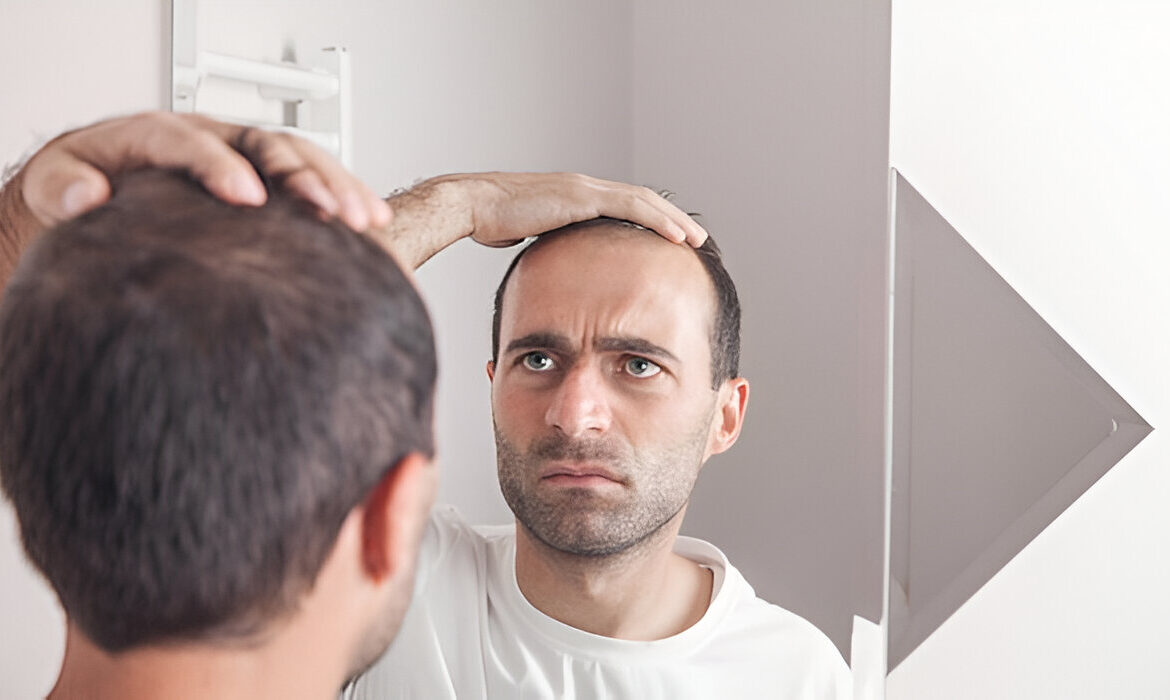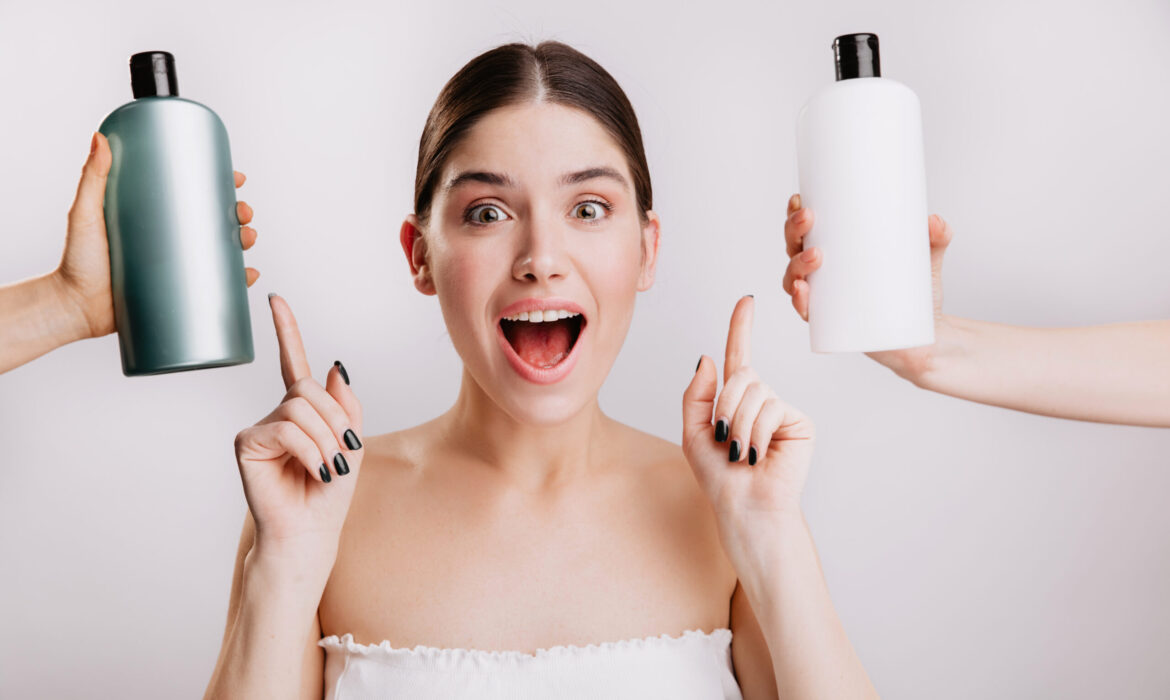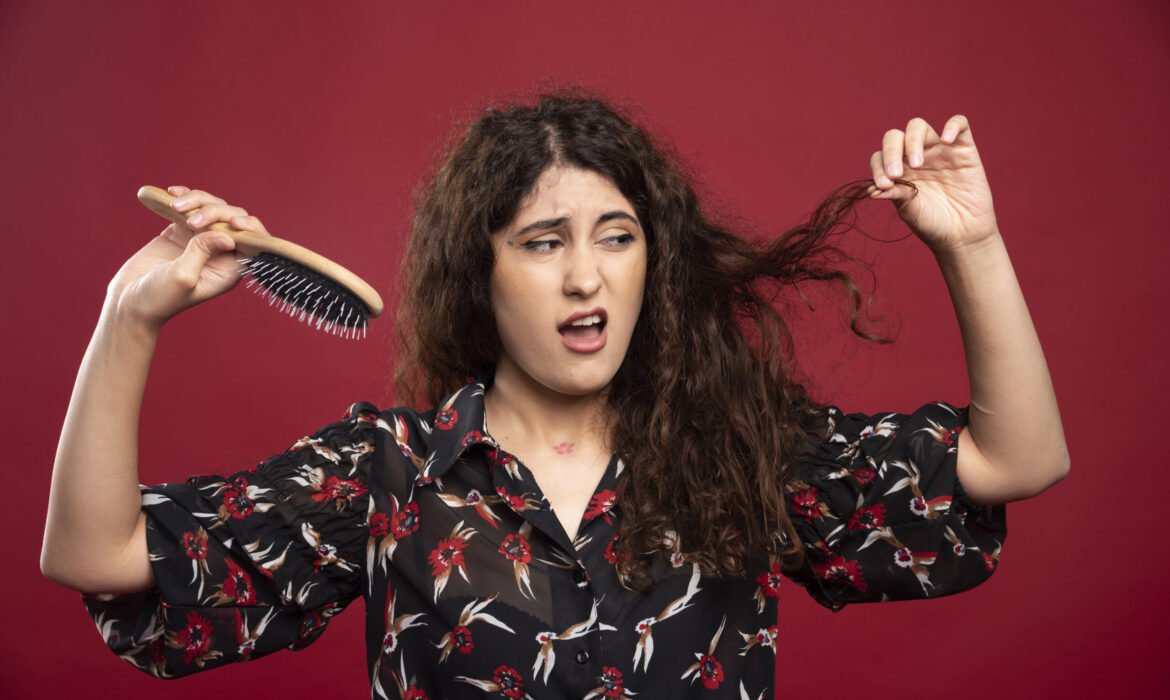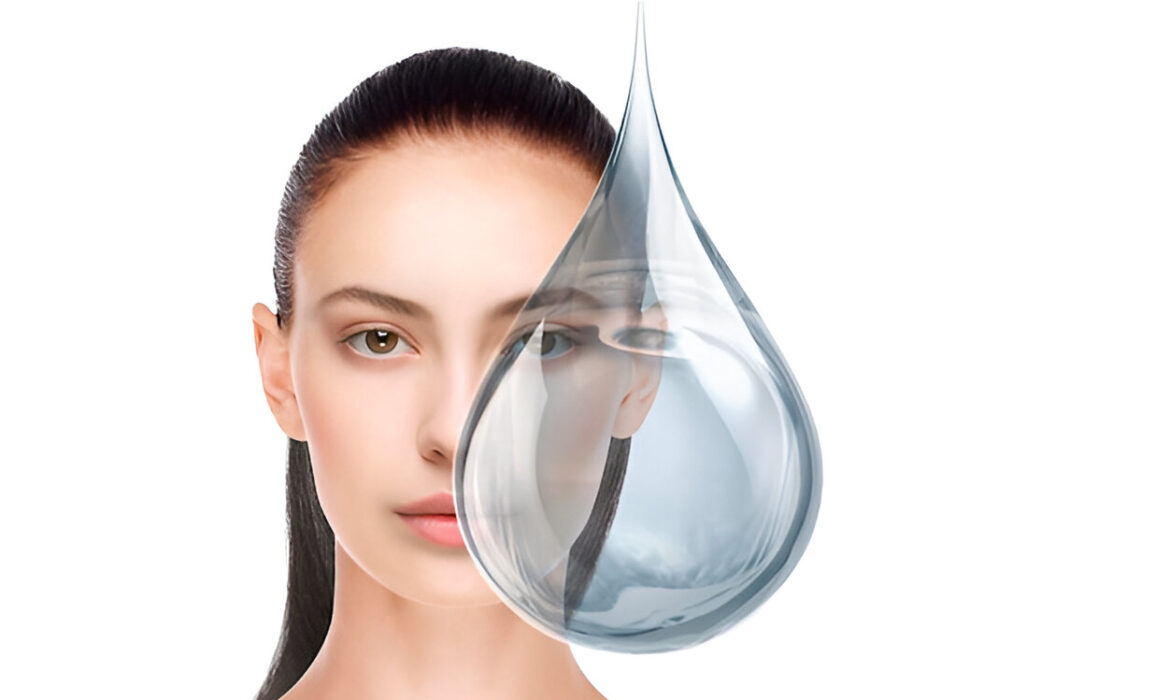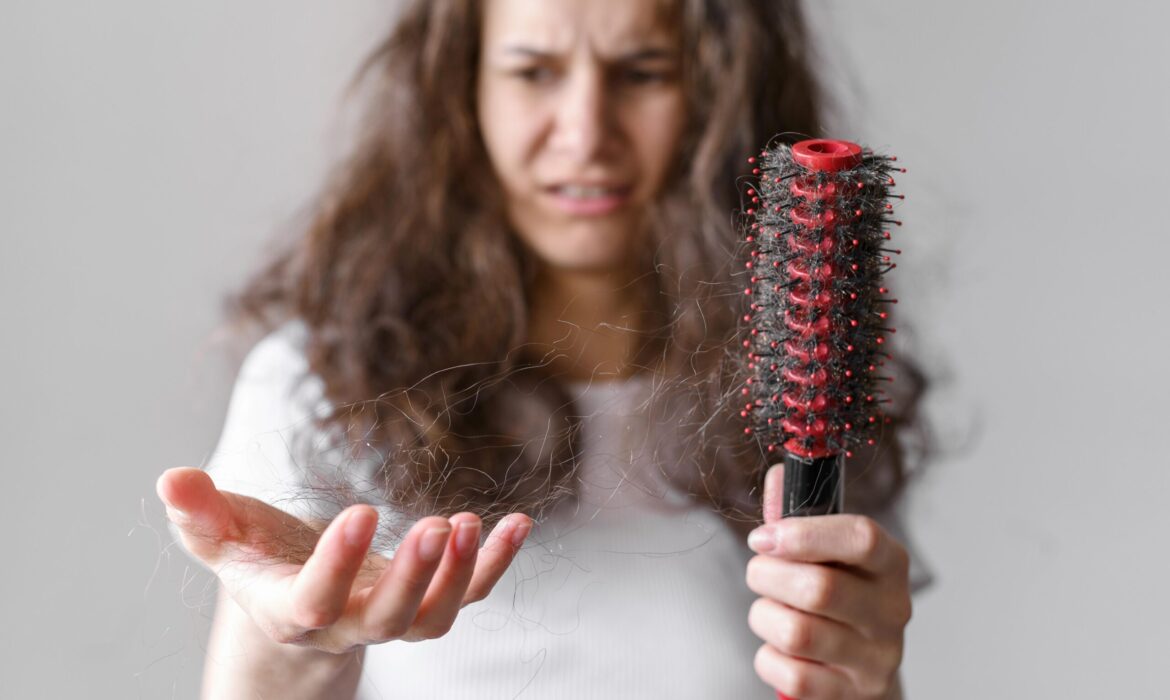Learn the truth behind hair transplant myth and facts. Get expert insights from Dr. Hanan Clinic to make confident, informed hair choices.
Hair Transplant Myth and Facts: Dr. Hanan Clinic
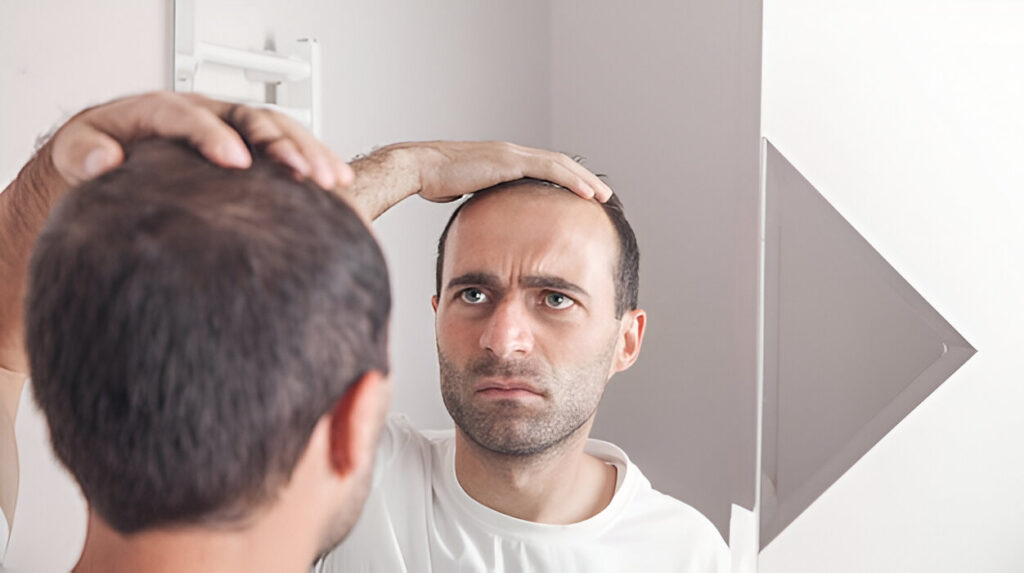
Hair loss can affect confidence, and for many people, a hair transplant becomes the most promising solution. But when it comes to hair transplant procedures, there is a lot of confusion. From social media rumors to old beliefs, many people fall prey to misinformation – and this can prevent them from taking the right decisions.
Dr. Hanan Dermatology Specialty and Trichology Clinic in Chennai, we believe in educating our patients so that they can make informed choices. This blog clears the most common hair transplant myths and facts, which spotlights the truth from fiction once and for all.
Myth 1: Hair Transplant Gives Instant Results
Facts: Hair growth after a transplant is a gradual process.
After a successful hair transplant, most people begin to see the growth of new hair post-procedure after 3-4 months. Full results can take 9–12 months depending on individual factors. Do not expect changes overnight – patience is key.
Myth 2: Hair Transplant Works for Everyone
Fact: Not everyone is a candidate for a hair transplant.
A hair transplantation requires healthy donor hair (usually behind the scalp or from the edges). If you have extensive baldness, poor donor density, or some medical conditions, you may not be eligible. Consultation with a qualified trichologist or dermatologist is necessary
Myth 3: Transplanted Hair Will Eventually Fall Out Again
Fact: Transplanted hair is permanent and typically doesn’t fall out.
The hair used in transplants comes from resistant areas which are genetically resistant to balding. Once transplanted, this hair usually maintains its resistance and grows like normal hair. However, your existing non-transplanted hair may still be thinner over time if not managed.
Myth 4: Hair Transplants Are Painful and Risky
Fact: Modern techniques make it a safe and minimally painful procedure.
Most patients experience minimal discomfort during and after the procedure, with advanced methods such as FUE (Follicular Unit Extraction) and FUT (Follicular Unit Transplantation). Local anesthesia is used, and recovery time is usually short. When performed by experienced professionals, it is extremely safe.
Myth 5: Only Men Can Get Hair Transplants
Fact: Women can also benefit from hair transplant procedures.
While male pattern baldness is more common, women also experience hair thinning, especially with part line or crown. Hair transplants for women are rapidly popular and highly effective when properly done.
Myth 6: Hair Transplants Look Fake
Fact: Modern hair transplants deliver natural-looking results.
Gone are the days of “Pluggy” hairlines. Today’s advanced procedures include accurate placements of individual hair, mimicking the growth pattern of your natural hair. At Dr. Hanan Dermatology Speciality and Trichology clinic, we ensure results that mix basically with your existing hair.
Myth 7: It's Better to Get a Transplant Abroad
Fact: Quality treatment is available right here in India.
Many believe that foreign travel guarantees better results, but it is no longer true. Leading dermatology clinics in India, like us, offer affordable costs with world class technology, experienced surgeons and quality.
Myth 8: You Don't Need Post-Transplant Care
Fact: Aftercare is essential for long-term success.
Even though the transplant is permanent, your scalp requires time to fix, and your new Rome requires proper nutrition. After the post-up care plan, it is important to use prescribed medicines, and to participate in follow-up.
Myth 9: Hair Transplant Leaves a Big Scar
Fact: Scar visibility depends on the technique used.
FUE (follicular unit extraction) leaves marks like small dot like scars that also appear barely with short hair. FUT can leave a linear mark, but it can often be hidden under the hair. In Dr. Hanan Clinic, we help patients choose the right technique depending on their goals and type of hair.
Myth 10: Hair Transplants Are Too Expensive
Fact: It’s a long-term investment and often cost-effective in the long run.
While the upfront cost may seem high, it saves you money compared to the ongoing treatments, serums or years of medications. In addition, it provides a permanent solution to hair loss, Boosting your confidence for life.
Why Choose Dr. Hanan Dermatology Speciality and Trichology Clinic?
At Dr. Hanan Dermatology Speciality and Trichology Clinic in Chennai. , we combine medical expertise with personal care. Our hair transplant procedures are:
- Performed by qualified dermatologist and surgeons
2. Advanced FUE -driven by technology
3. To conform to your unique hairline and facial features
4. Long -term follow -up and supported by support
Whether you are facing the loss of thin or advanced hair at an early stage, we are helping to re-achieve your confidence here-naturally and safely.
Final Thoughts: Don’t Let Myths Hold You Back
Hair loss is a sensitive subject, but should not cause misinformation that you avoid delay or treatment. For hair transplant myths and facts, this guide is to help you make a decision -filled decision.
Book Your Consultation Today!
For Personalised Treatment visit Dr. Hanan Clinic. Feel confident and proud with our expert care.
Table of Contents
How to Choose the Right Shampoo for Your Hair Type
How to Choose the Right Shampoo for Your Hair Type
Confused about shampoo? Learn how to choose the right shampoo for your hair type with expert tips from Dr. Hanan Dermatology Clinic, Chennai.
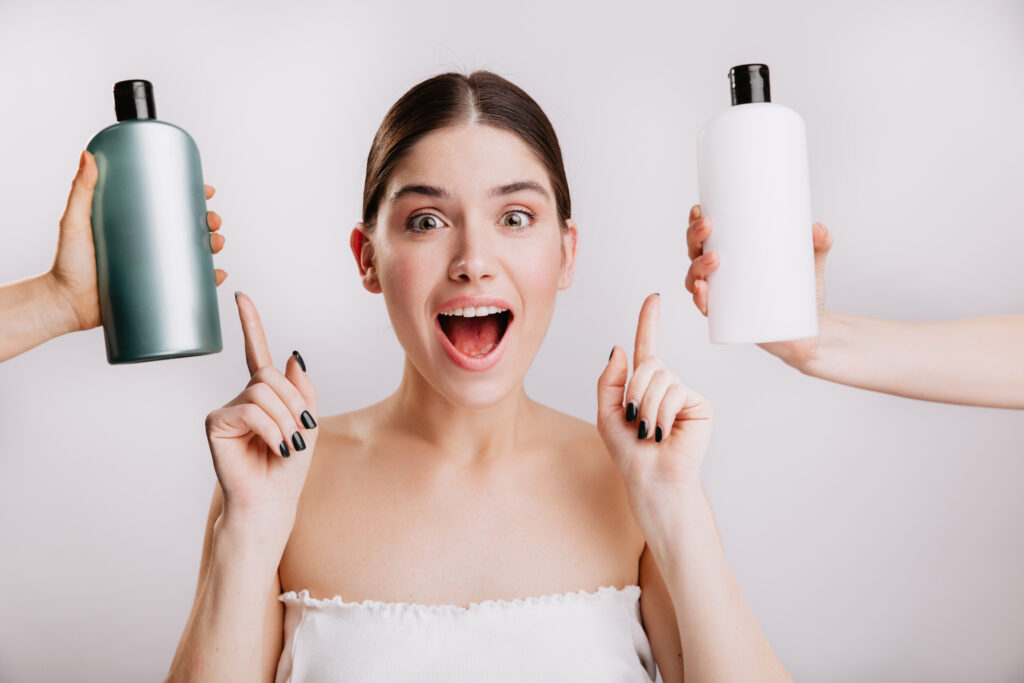
Choosing the right shampoo might seem like a small decision, but it plays a big role in your hair health. With endless options on the shelves—hydrating, clarifying, volumizing, anti-dandruff—it’s easy to feel confused. The truth is, using the wrong shampoo can lead to dryness, hair fall, dandruff, and an irritated scalp.
At Dr. Hanan Dermatology Speciality and Trichology Clinic in Chennai, we guide our patients in making personalized hair care choices, starting with the right shampoo for their unique hair and scalp type. In this blog, let’s decode how to pick the perfect shampoo that actually works for you.
Why Choosing the Right Shampoo Matters
Your shampoo is more than just one cleanser – this is the foundation of your hair care routine. The right one supports the health of your scalp, strengthens your hair roots, and keeps your strands shiny and manageable. Wrong one, however, can spoil your scalp condition and cause issues like:
- Hair thinning
- Increased hair fall
- Greasiness or dryness
- Frizz and dullness
- Flaky scalp or dandruff
Step 1: Understand Your Hair Type
Before shopping for a shampoo, determine your hair type:
1. Oily Hair
Quickly looks smooth or flat. A clear or balancing shampoo is required that removes excess oil without drying the scalp.
2. Dry Hair
Often feel brittle, rough or frizzy. A moisturizing or hydrating shampoo with ingredients such as shea butter, argan oil, or coconut oil.
3. Normal Hair
Not very oily or dry. You can choose a mild, sulfate-free shampoo that maintains the natural balance of your scalp.
4. Combination Hair
Oily on the roots and dry at the ends. Choose a balancing formula or apply shampoo to the scalp only when conditioning the ends.
Step 2: Know Your Scalp Type
A healthy scalp equals healthy hair. Match your shampoo to your scalp needs, not just your hair strands.
- Oily scalp: Go for a shampoo with ingredients such as tea tree oil, salicylic acid, or charcoal to control sebum.
- Dry scalp: Soothing ingredients like aloe vera, glycerin and ceramides
Sensitive or itchy scalp: Use fragrance-free, dermatologist-tested shampoos that are soft and hypoallergenic.
Step 3: Identify Hair Concerns
Choose a shampoo that targets your specific hair concern:
Hair Concern | Ideal Shampoo Type |
Hair fall | Strengthening or anti-hair fall shampoo with keratin or biotin |
Dandruff | Anti-dandruff shampoo with zinc pyrithione, ketoconazole, or salicylic acid |
Frizz | Smoothing shampoo with argan oil or keratin |
Color-treated hair | Color-protect shampoo that’s sulfate-free |
Heat-damaged hair | Repairing shampoo with protein and amino acids |
Step 4: Avoid Harmful Ingredients
When choosing a shampoo, always read the label. Avoid these ingredients that can damage your hair over time:
- Sulfates (SLS, SLES) – Can strip natural oils and irritate the scalp
- Parabens – Preservatives linked to hormone disruption
- Alcohol – Can be drying (except for fatty alcohols like cetyl or stearyl)
Artificial fragrance or color – May trigger sensitivity or allergies
Step 5: Try Before You Commit
If you’re unsure whether a shampoo will suit your hair:
- Start with a small bottle or travel size
- Use it for at least 2–3 washes
- Watch how your scalp and strands respond
If irritation, hair fall, or excess dryness occurs, discontinue use and consult a dermatologist.
Expert Advice from Dr. Hanan Dermatology Clinic
Every scalp and hair type are different. This is why Dr. Hanan Dermatology Specialty and Trichology Clinic in Chennai, we provide individual hair care guidance after a detailed scalp analysis. Whether you are struggling with hair loss, dandruff, or dryness, our team will help you take the right shampoo and treatment to restore hair health.
Quick Tips to Get the Best Out of Your Shampoo
Shampoo your scalp, not only hair length
Rinse well to avoid buildup
Use lukewarm or cold water, not hot
Follow with conditioner suitable for your hair type
Do not over wash – For most people the ideal wash is 2-3 times.
Conclusion
Your shampoo can either protect your hair or be the silent criminal behind damage. Choosing the right shampoo for your hair type makes your hair healthy, vibrant and strong. If you are uncertain from where to start, then book a consultation with our hair experts at Dr. Hanan Dermatology and Trichology Clinic – we are here to guide you at every step.
Book Your Consultation Today!
For Personalised Treatment visit Dr. Hanan Clinic. Feel confident and proud with our expert care.
Table of Contents
Hair Fall Treatment for Women: Causes, Remedies & Solutions
Hair Fall Treatment for Women: Causes, Remedies & Advanced Solutions
Looking for the best hair fall treatment for women? Discover expert solutions, causes, and remedies from Dr. Hanan Dermatology Clinic.
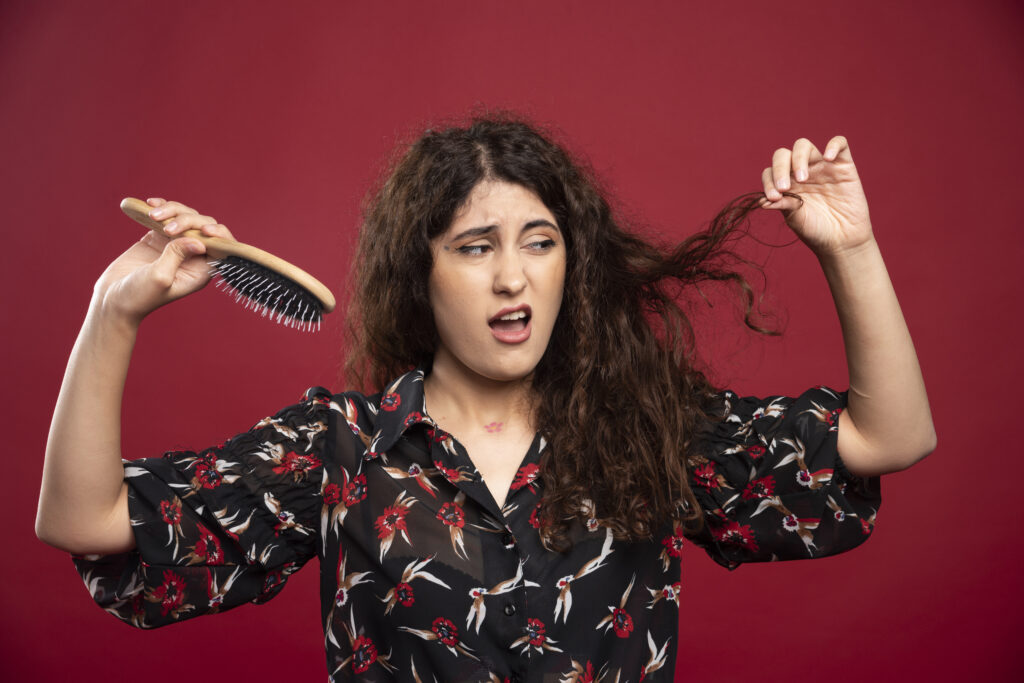
Hair is an essential part of a woman’s identity and confidence. But when the hair falls, it can cause anxiety, low self -esteem and emotional distress. Dr. Hanan Dermatology Specialty and Trichology Clinic, we understand the emotional and physical effects of female hair loss – and we are here to help you find a real solution.
In this comprehensive guide, you will learn the causes of hair fall in women, how to identify early signals, and the most effective hair fall for women – from home remedies to clinical intervention.
What Is Hair Fall in Women?
Hair collapse, or hair loss in women is medically known as female pattern hair loss (FPHL) or Androgenic Alopecia. This male pattern differs from baldness and often presents as a normal thin on the crown rather than a recurrent hairline.
Most women shed between 50–100 strands per day, which is normal. However, when hair shedding exceeds this rate or you notice to be visible, it is time to take action.
Common Causes of Hair Fall in Women
Understanding the root cause of hair loss is crucial for effective treatment. Here are some of the most common culprits:
1. Hormonal Imbalances
- Thyroid disorders
- Polycystic ovary syndrome (PCOS)
- Menopause or postpartum hormone shifts
Hormones regulate hair growth cycles, and imbalances can lead to shedding or thinning.
2. Stress & Lifestyle
High stress levels can trigger telogen effluvium due to work pressure, anxiety or trauma, a condition where hair enters the resting phase and falls out.
3. Nutritional Deficiencies
- Iron, Vitamin D, Zinc, and Biotin deficiencies are often linked to hair loss.
2. Poor diet or extreme weight loss can rapidly deplete nutrients essential for hair growth.
4. Medical Conditions
- Alopecia Areata – An autoimmune condition causing patchy bald spots.
Scalp Infections – Fungal infections like ringworm can lead to localized hair loss.
5. Genetics
If your mother or grandmother experienced hair thinning, you may be genetically predisposed to female pattern hair loss.
Early Signs of Hair Loss in Women
Recognizing the early signs helps prevent further damage:
- Thinning on the top or crown of the scalp
2. Widening of the hair part
3. More hair in your comb or shower drain
4. A ponytail that feels thinner than usual
5. Bald spots or patches
Best Hair Fall Treatments for Women
At Dr. Hanan Dermatology Clinic, we offer customized treatment plans based on your hair type, scalp condition, and lifestyle. Here are the best hair fall treatments we recommend:
1. Topical Medications
Minoxidil 2% or 5%: FDA-approved treatment for women. Encourages hair growth by widening blood vessels and extending the growth phase.
2. Oral Medications
- Spironolactone: Blocks androgens, suitable for women with PCOS-related hair loss.
2. Iron or Vitamin D supplements: Corrects deficiencies that contribute to shedding.
3. Platelet-Rich Plasma (PRP) Therapy
PRP uses your own blood platelets to stimulate dormant hair follicles. It’s a non-surgical, advanced method that promotes natural hair growth.
4. Low-Level Laser Therapy (LLLT)
Laser caps and in-clinic laser treatments improve scalp circulation and hair density.
5. Mesotherapy
A non-invasive treatment involving micro-injections of vitamins, enzymes, and plant extracts directly into the scalp to stimulate follicles and strengthen hair.
Natural Remedies and Home Care Tips
While clinical treatment is effective, integrating home remedies into your routine can complement professional care:
- Use a wide-tooth comb to prevent breakage.
- Avoid tight hairstyles like ponytails and buns.
- Oil massages with castor or coconut oil to improve blood circulation.
- Aloe vera gel application helps soothe the scalp and reduce dandruff.
Scalp exfoliation once a week to remove dead skin and stimulate follicles.
Lifestyle Changes for Long-Term Hair Health
- Balanced diet rich in protein, iron, omega-3 fatty acids, and vitamins.
- Hydration: Drink at least 2–3 liters of water daily.
- Sleep: Get 7–8 hours of uninterrupted sleep to support hormonal balance.
Limit heat styling and chemical treatments that weaken the hair shaft.
Why Choose Dr. Hanan Dermatology Speciality and Trichology Clinic?
Located in Padur, Chennai, our clinic is known for:
Experienced Dermatologists & Trichologists
Advanced Technology (PRP, Mesotherapy, LLLT)
Personalized Hair Restoration Plans
High Success Rate & Client Satisfaction
Whether you’re experiencing seasonal shedding or long-term hair thinning, our specialists will work with you to diagnose the cause and craft a treatment plan that delivers visible results
Book Your Consultation Today
Don’t let hair loss affect your confidence. Get professional care from the leading hair fall treatment clinic in Chennai. Contact us today to schedule a scalp analysis and consultation.
Book Your Consultation Today!
For Personalised Treatment visit Dr. Hanan Clinic. Feel confident and proud with our expert care.
Table of Contents
How to Hydrate Skin: Your Ultimate Guide to Radiant, Healthy Skin
How to Hydrate Skin: Your Ultimate Guide to Radiant, Healthy Sin
Discover how to hydrate skin effectively with proven tips, expert ingredients, and daily habits for lasting moisture and glowing skin.
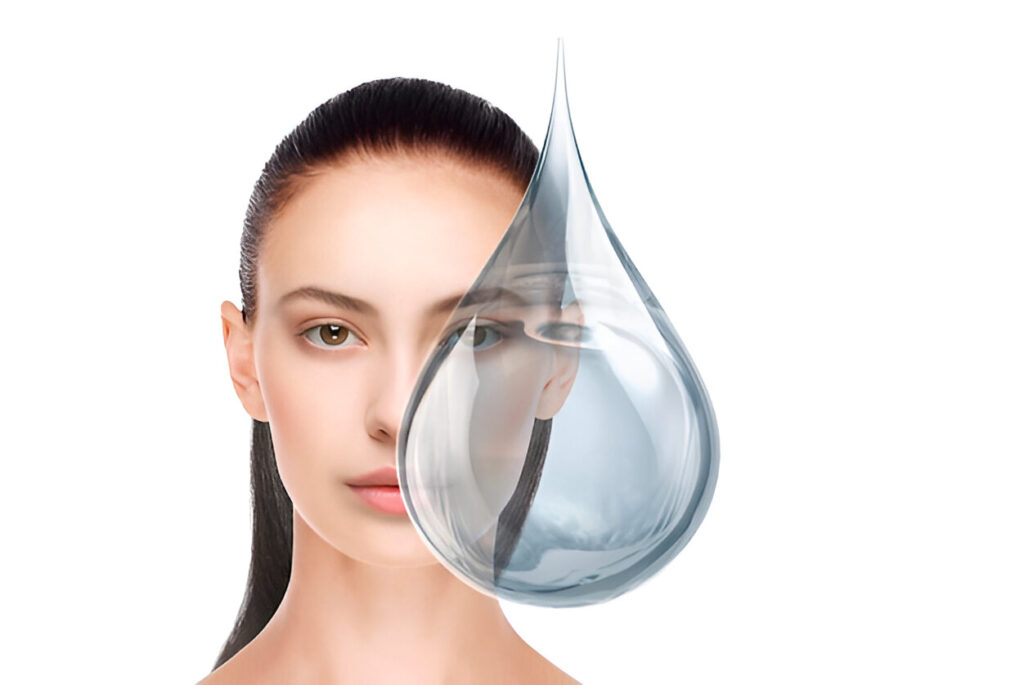
Skin hydration is more than just a discussion – It’s an important skincare routine. If your skin often feels dry, tight, flaky or dull, you can deal with dehydration. Whether you have dry, oily, or combination skin, learning to effectively hydrate the skin, can help restore its brightness, improve elasticity, and prevent signs of aging.
In this guide, we dive into practical, science -backed tips to deeply hydrate your skin and maintain moisture from both inside and outside.
Understanding Skin Hydration vs. Skin Moisture
Many people confuse hydration and moisturization, but they serve various purposes. Hydration is to increase your skin water content, while moisturization helps in that hydration seal.
If your skin feels rough, dull, or tight, it is possibly dehydrated. On the other hand, if it sounds dry and flaky, you may need more moisture.
1. Start with a Hydrating Cleanser
Your skincare routine starts with cleanliness. But using hard, sulfate-rich face washes can remove the natural oils of your skin. Choose a soft, hydrating cleanser that does not disrupt the moisture balance of your skin.
Look for:
- Glycerin
- Aloe vera
- Coconut-derived surfactants
- Panthenol (Vitamin B5)
2. Apply Products on Damp Skin
Want to do your skincare better? Apply it while your skin is still slightly moist. When you apply hydrating serum and moisturizer after washing your face, your skin absorbs active ingredients more effectively.
This method also reduces Transepidermal water loss (TWEL), which helps your skin to maintain moisture.
3. Use Serums Rich in Humectants
Hydrating serum contains humectants, materials that draw water in the skin. The most effective ones include:
- Hyaluronic Acid – attracts and holds moisture up to 1000x its weight in water.
- Glycerin – draws moisture from the air and deeper skin layers.
- Sodium PCA – a natural component of the skin that hydrates and softens.
Pro tip: Pair hyaluronic acid with a good moisturizer to lock in the hydration it attracts.
4. Moisturize with Hydration-Locking Ingredients
After hydrating, seal it in with a rich but non-comedogenic moisturizer. Choose products based on your skin type:
Dry skin: Ceramides, shea butter, squalane
Oily skin: Gel-based moisturizers with aloe or panthenol
Sensitive skin: Fragrance-free creams with oat extract or niacinamide
Applying moisturizer twice a day strengthens your skin’s lipid barrier and prevents water loss.
5. Drink More Water — But Not Just That
Yes, drinking water is important. But only drinking water is not enough to instantly hydrate your skin unless your entire body is hydrated. Intake water with water rich fruits and vegetables like:
- Cucumber
- Watermelon
- Oranges
- Strawberries
- Spinach
Also, avoid dehydrating drinks like alcohol and caffeinated beverages if your skin feels tight or flaky.
6. Add a Humidifier to Your Routine
Environmental factors play a major role in skin hydration. Dry indoor air, especially air conditioner and heater, can calm your skin moisture. Running a humidifier at night replenishes the moisture in the air, which helps your skin to stay hydrated while sleeping.
7. Don't Skip Your Nighttime Routine
Night time occurs when your skin goes into repair mode. A consistent evening routine supports deep hydration:
- Gentle cleanser
- Hydrating toner or essence
- Hyaluronic acid or niacinamide serum
- Moisturizer or overnight hydrating mask
You can also use occlusive agents like petroleum jelly (slugging) at night to trap hydration and reduce water loss.
8. Avoid Over-Exfoliating or Using Harsh Ingredients
Exfoliation is essential for skin renewal, but overdoing. It can damage your skin barrier, leading to lack of moisture. Limit exfoliating 1-2 times a week using light AHA or BHA.
Avoid ingredients causing excessive dryness:
- Alcohol Denat.
- Strong retinoids (without moisturizer layering)
- Benzoyl peroxide (without hydration support)
9. Protect Skin with SPF Daily
The sun exposure dehydrates the skin and weakens its ability to maintain moisture. Always use a broad-spectrum sunscreen with SPF 30 or higher. See for double sunscreen moisturizing in the form of skincare.
10. Consider Professional Hydration Treatments
If your skin is extremely dehydrated or you’re not seeing improvement from your skincare routine, professional dermatological treatments may help:
- HydraFacial – deep cleans, exfoliates, and hydrates in one session
- Mesotherapy – injects hyaluronic acid directly into the skin
- Skin boosters – improve hydration and texture with long-lasting results
Book a consultation with Dr. Hanan Dermatology Speciality Clinic to explore personalized hydration treatments tailored to your skin type.
Conclusion: Consistency is the Key to Skin Hydration
Understanding how to hydrate skin is about building a daily habit — not just applying a product when your skin feels dry. Hydration works best when combined: internal nourishment, topical hydration, and environmental care.
Keep your routine simple, stay consistent, and protect your skin’s barrier. With time, you’ll notice smoother, brighter, and more resilient skin.
Book Your Consultation Today!
For Personalised Treatment visit Dr. Hanan Clinic. Feel confident and proud with our expert care.
Table of Contents
Hair Fall While Combing: Best Ways to Minimize It
Hair Fall While Combing: Best Ways to Minimize It
Struggling with hair fall while combing? Learn normal hair loss limits, causes, and expert-backed solutions to reduce breakage patient outcomes in India.

Hair fall while combing is a common concern for many individuals. While some hair shedding are natural, excessive hair loss may indicate inherent health issues, poor hair care practices, or environmental factors. In this guide, we will find out how much hair fall per day is normal, due to hair fall while combing, and practical steps to reduce it. Whether you are dealing with hair breakage, hair thinning, thin, or seasonal shedding, understanding the reasons can help you find an effective solution.
How Much Hair Loss Per Day Is Normal?
On average, losing 50 to 100 hair per day is considered normal. The hair grows in cycles – anagen (development), catan (transitional), and telogen (comfort). During the telogen phase, the hair naturally shed the way for new growth. However, if you are seeing clumps of hair while combing or brushing, it may be time to re-think your routine or talk to a specialist.
Causes of Hair Fall While Combing
Many factors contribute to noticeable hair fall during combing or brushing:
1. Weak Hair Strands
Protein or keratin deficiency in the hair shaft can make strands brittle, making them more likely to break during combing.
2. Wet Hair Combing
Hair is its weakest when it is wet. Brushing moist hair increases the chances of breakage and root stress.
3. Tight Hairstyles and Tension
Regularly tying your hair in tight buns, ponytails, or braids puts constant pressure on the roots, causing traction alopecia, a type of hair loss due to stress.
4. Nutritional Deficiencies
Lack of essential nutrients such as iron, biotin, vitamin D, and zinc can weaken the hair follicle and increase hair fall.
Best Ways to Minimize Hair Fall While Combing
1. Use the Right Comb
Use a wide-toothed comb to manage lumps without tugging or breaking the hair. Avoid metal combs or brushes with sharp bristles.
2. Start Detangling from the Ends
Instead of pulling from the root to the tip, start detangling from the ends, working in your own way. This method reduces stress on the roots and minimizes breakage.
3. Avoid Heat and Harsh Chemicals
Heat tools usage (such as straightener or curling iron) and more use of harsh hair products can weaken the hair shaft. Stick to sulfate-free shampoo, natural oil (such as argon or coconut oil), and minimal heat styling.
4. Don't Comb Wet Hair
Wait for your hair to dry at least 80% before brushing. Alternatively, use a microfiber towel to soak excess water and allow it to dry in the air before combing it.
5. Condition Regularly
Using a deep conditioner or leave-in treatment can make the hair cuticle smooth, reduce friction while combing your hair, and prevent the split ends. the air before combing it.
Other Contributing Factors to Hair Fall
Hormonal Changes
Pregnancy, postpartum changes, menopause, and thyroid issues can change hair growth cycles, leading to temporary or long -term hair collapse.
Stress and Lack of Sleep
High stress increases cortisol levels in the body, which can disrupt hair follicle function. Chronic stress is often associated with telogen effects, a condition where hair sheds more than normal.
When to See a Dermatologist
If you notice:
Sudden hair thinning or bald patches
Excessive shedding for over a month
Scalp irritation, redness, or dandruff accompanying hair fall
It is important to consult a dermatologist or trichologist. They can perform scalp assessment, blood tests, and recommend treatments such as PRP therapy, medicated shampoos, or even hair transplant consultation for advanced cases.
Conclusion
While some shedding is natural, frequent hair fall while combing shouldn’t be ignored, soft care and gentle handling and a nutritious diet, you can greatly reduce hair breakage and support healthy hair growth. Dr. Hanan Dermatology Specialty Clinic, we specialize in identifying the root cause of hair fall and providing customized treatment plans. Book your consultation today and take the first step towards restoring strong, beautiful hair.
Book Your Consultation Today!
For Personalised Treatment visit Dr. Hanan Clinic. Feel confident and proud with our expert care.
Table of Contents
How to Choose the Best Hair Transplant Clinic
How to Choose the Best Hair Transplant Clinic
Expert tips to choose the Best Hair Transplant Clinic with qualified surgeons, advanced techniques, and trusted patient outcomes in India.

Choosing the right hair transplant clinic is an important decision to deal with any hair loss. There are lots of options available, especially in India, it can be challenging to find the clinic that suits your needs. A hair transplant is an important investment, and the results will be with you for a lifetime. This is why it is necessary to ensure that the clinic you choose is capable of providing excellent resultsThis blog guide helps you choose the best hair transplant clinic to help you make an informed decision.
1. Credentials and Experience of the Surgeon
One of the most important factors when choosing a hair transplant clinic is the credibility and experience of the surgeon. In India, there are many clinics that provide child restoration treatment, but the level of expertise varies significantly. The best clinic will have a qualified surgeon that is board-attested and especially in hair restoration processes.
The most reputed clinics appoint surgeons, who are members of professional organizations such as Indian Association of Dermatologists, Venerologist, and Leprologists (IADVL) and International Society of Hair Restoration Surgery (ISHRS). This affiliation ensures that the clinic follows high medical standards and moral practices.
When choosing a clinic, ask the following questions:
1. How many years of experience does the surgeon have in transplanting hair?
2. What procedure have they mastered (FUE, FUT, DHI)?
3. Can the clinic show the pictures of before and the after image of the patients who had similar hair loss patterns?
Surgeon’s experience and training plays an important role in determining the result of your process. Be sure to select a clinic where the surgeon has a proven track record and is well honored within the hair restoration community.
2. Technology and Techniques Used
The hair transplant field has developed considerably in the last few decades, improving the quality of results with new techniques and techniques. The best hair transplant clinic invests in advanced equipment and techniques to offer best results for its patients.
The main techniques are mainly given in the prestigious clinics:
Follicular unit extraction (FUE): This minimal invasive technique includes extracting hair follicles from the donor field and transplanting them into balding areas. FUE leaves no visible scars and promotes fast recovery.
Follicular Unit transplantation (FUT): In this method, a strip of scalp is removed from the donor area, and individual hair follicles are transplanted. While this technique leaves a linear scar, it is often preferred for patients who require large graft numbers.
Direct Hair Implantation (DHI): A more advanced method where follicles are directly implanted using a special pen, providing high precision and natural looking results.
It is necessary to select a clinic that remains updated with the latest progression in the area. Ensure that the clinic offers these techniques, especially FUE and DHI, as they are less aggressive and provide better, long -lasting results.
3. Consultation and Customized Treatment Plan
A good clinic will not only give you a consultation, but will also take time to assess your personal needs. During consultation, the doctor should evaluate your hair loss condition, check your donor area and discuss your expectations. Based on this evaluation, they should provide a customized treatment plan that outlines the process, the number of required grafts, and a realistic timeline.
Avoid clinics that push you into quick decision making or offer one-size-fits-all solutions. The best hair transplant clinic will ensure that the treatment plan is ready to meet your unique requirements, whether you have an early stage hair loss or broad thin.
In addition, consultation is a great opportunity to discuss your concerns and feel a feeling for the clinic environment and the professionalism of the employees. A clear, informative and transparent consultation process is a hallmark of a trusted clinic.
4. Reputation and Patient Reviews
In today’s digital world, the patient’s reviews and Testimonials are invaluable tools when researching the clinic. The best hair transplant clinic will have an installed reputation, and you will find many positive reviews online. Pay full attention to platforms such as Google review, Practo, or RealSelf. These reviews provide a transparent approach to the results of the clinic, quality of care and experience of previous patients.
While reading the review, consider watching:
Testimonials from patients with similar types of hair loss.
Photos showing results before and after.
The clinic’s hygiene, aftercare support and alternative to overall experience.
The real patient experience will give you information about the process and what will be expected before, and after the process.
5. Avoid Touching Your Face
While the cost is an important factor, it should not be decisive. Hair transplant prices in India may vary significantly, but they should not be the only determinant of your choice. A clinic that provides very cheap or low-cost procedures can compromise on quality, which can later lead to poor results and additional costs.
When comparing prices, always ask for the breakdown of costs:
1. Cost per graft cost
2. An additional fee for medication or post-process follow-ups
3. Aftercare or hidden cost for modification
Choose a clinic that provides a transparent pricing model. Many iconic clinics such as Dr. Hanan Dermatology Speciality and Trichology clinic also provide financing options to make the process more economical without compromising on the quality of service.
6. Aftercare and Post-Procedure Support
A hair transplant does not eliminate the moment when the process is finished. Post-operative care is important for the success of your hair restoration journey.
The best hair transplant clinic will offer a Comprehensive care, including:
- Follow-up consultation for monitoring new hair growth.
- Detailed instructions for after surgery care, how to wash your hair and medicines to prevent infection.
- Alternative treatment such as platelet-rich plasma (PRP) therapy to increase the treatment process and encourage hair growth.
The clinic should make you feel comfortable and well -supported during the recovery phase. Ensure that they provide enough resources to guide you through the treatment process.
7. Location and Accessibility
While hair transplant clinics are available across India, it is important to choose one which is easily accessible to you. Consider the location of the clinic and how far you are ready to travel. If you are located in a major city like Chennai, Delhi or Mumbai, you will have access to many high quality options.
Choose a clinic that offers convenient appointment time, and if you are traveling outside the city, see if the clinic provides travel packages or recommendations for accommodation..
Conclusion: Choose the Best Hair Transplant Clinic for Long-Term Results
It is important to choose the best hair transplant clinic to achieve natural, long lasting results. By considering factors such as the credentials of the surgeon, available technologies, patient reviews and aftercare support, you can make an informed decision that ensures that your hair restoration journey is smooth and successful.
If you are ready to take the next step in your hair restoration journey, then Dr. Hanan Dermatology Specialty and Trichology Clinic is the best choice. Our experienced team of hair restoration experts will provide you with personal counseling and will be the best possible care to help you achieve the results of your desire.
Book Your Consultation Today!
For Personalised Treatment visit Dr. Hanan Clinic. Feel confident and proud with our expert care.
Table of Contents
How to Get Clear Skin: Proven Tips for a Glowing skin
How to Get Clear Skin: Proven Tips for a Glowing skin
How to get clear skin with expert tips on cleansing, exfoliating, and targeted care for glowing, blemish-free skin.
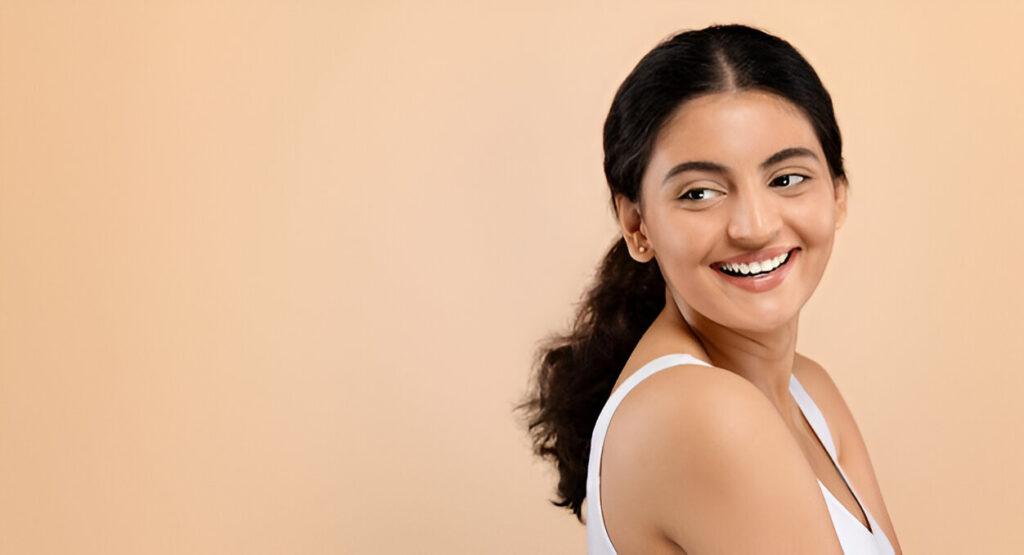
Achieving clear skin isn’t just about following trends or chasing influencer-endorsed routines — it’s about establishing a lifestyle that prioritizes skin health. If you’ve ever wondered how to get clear skin, know that it’s the result of consistent care, evidence-based skincare practices, and making the right choices every day. Whether you’re tackling breakouts, dullness, or uneven skin tone, the journey starts with understanding what your skin truly needs.
Let’s dive into the best practices to help you achieve a naturally glowing, blemish-free complexion.
1. Cleanse Gently but Thoroughly
Cleansing is the cornerstone of any skincare regimen. A clean face ensures that other skincare products can be absorbed properly. Wash your face twice daily – to remove sweat and oil overnight in the morning, and to get rid of dirt, pollutants and makeup at night. Use a gentle, pH-balanced cleanser that suits the type of your skin-oily, dry, or combination.
Over-cleansing or using harsh soaps can damage the skin barrier, leading to irritation and dryness, which can actually trigger more breakouts. Stick with a cleanser that contains skin -friendly ingredients such as ceramides or aloe vera.
Extra Tip: For acne-prone skin, ingredients like salicylic acid, benzoyl peroxide, or tea tree oil can help reduce inflammation and unclog pores.
2. Exfoliate Regularly — But Don’t Overdo It
Exfoliation helps to remove dead skin cells that can stop pores and can make your skin look dull. By exfoliating 2-3 times a week, you stimulate the cell turnover, promoting a smooth and more-toned complexion. However, more isn’t always better — over-exfoliating can lead to micro-tears and sensitivity.
Chemical exfoliants such as glycolic acid (AHA) and salicylic acid (BHA) are particularly effective for all types of all types. They enter deeply than physical scrub and are less likely to cause irritation when used properly.
3. Moisturize Daily — Even If You Have Oily Skin
Many people skip the moisturizer thinking that it will spoil the oil or cause acne. In fact, skipping of moisturizer can lead to dehydration, causing more than oil to compensate for your skin. The key is using a non-comedogenic, light moisturizer that hydrates without closing the pores.
Look for formulations with hyaluronic acid, glycerin, or niacinamide – these elements not only lock the moisture, but also improve the skin texture and tone over time.
Pro Tip: Apply moisturizer immediately after cleansing while your skin is still slightly damp. This helps seal in hydration effectively.
4. Don’t Skip Sunscreen — Ever
If you want clear skin that stays youthful, sunscreen is non-negotiable. Unprotected exposure to the sun can lead to hyperpigmentation, uneven skin tone, sunburn, and premature aging — all of which can hinder your skin goals.
Choose a broad-spectrum sunscreen with at least SPF 30 and reapply every two hours, especially if you’re sweating or outdoors for extended periods. Mineral sunscreens with zinc oxide or titanium dioxide are great for sensitive or acne-prone skin.
5. Avoid Touching Your Face
Your hands face countless surfaces throughout the day, raising bacteria, oil and other impurities. Each time you touch your face, you risk transferring that grime directly into your skin, which increases the chances of clogged pores and acne.
Always be aware that you keep your hands away from your face unless you’re cleansing or applying skincare. In addition, clean the screen of your phone regularly and change your pillow weekly – small hygiene habits that make a big difference.
Pro Tip: If you’re a frequent face-toucher, keep a reminder on your desk or phone screen to break the habit.
6. Maintain a Balanced Diet and Stay Hydrated
Your skin reflects your internal health. Consuming a diet rich in dense foods of nutrients can improve your skin texture, clarity and flexibility. Antioxidants from berries, leafy greens, nuts, and seeds help in combating oxidative stress, while omega -3 are found in fish such as fatty acids, such as salmon reduce inflammation and support a healthy lipid barrier.
Limit the intake of Processed foods, dairy (if you are sensitive), refined sugars – which can spike all insulin and contribute to a breakout. And of course, drink enough water – ideally 8–10 glasses daily to keep your skin plump, clear and well-hydrated from within.
7. Follow a Consistent Night time Routine
Night time is the natural repair time of your skin. Having a structured evening skincare routine can increase recovery and help in dealing with specific skin concerns at bedtime.
Start with a soft cleanser to remove makeup and buildup. To prepare the skin, follow with a toner or essence, then apply serum like niacinamide, retinol, or vitamin C on your base
Bonus Tip: Use a silk or satin pillowcase to reduce friction and keep skin smoother overnight.
8. Get Enough Sleep and Manage Stress
Sleep and stress are two underrated yet powerful contributors to skin health. Lack of sleep disrupts hormonal balance and skin regeneration, causing dull, puffiness and acne. Chronic stress increases the level of cortisol, which triggers oil production and inflammation.
Target for a comfortable sleep of at least 7-9 hours. Include stress-reducing activities in your daily life-it should be a journey, a nature walk, meditation
9. Use Targeted Treatments for Specific Issues
When dealing with stubborn issues such as acne, dark spots, or fine lines, over-the-counter treatment can offer powerful support-but only when used wisely. Look for products with active ingredients:
- Vitamin C: For brightening and reducing hyperpigmentation
- Retinol: For anti-aging and acne control
- Benzoyl peroxide: For acne-causing bacteria
- Azelaic acid: For redness and acne scars
Always start with a patch test and introduce one active product at a time to avoid overwhelming your skin.
Pro Tip: Consulting a dermatologist can help you choose the right actives for your unique skin concerns.
ConclusionConclusion: Clear Skin Is a Journey, Not a Quick Fix
Understanding how to get clear skin means knowing that consistency, patience, and the right guidance are key. There’s no one-size-fits-all miracle product, but by establishing a balanced skincare routine, making healthy lifestyle choices, and staying informed, you can achieve the radiant, blemish-free complexion you deserve.
Still struggling with persistent skin issues or confused about what products suit your skin? Visit Dr. Hanan Dermatology Speciality Clinic for personalized consultations, expert-guided treatments, and tailored skin solutions that truly work. Our team is here to support you every step of your clear skin journey.
Book Your Consultation Today!
For Personalised Treatment visit Dr. Hanan Clinic. Feel confident and proud with our expert care.

